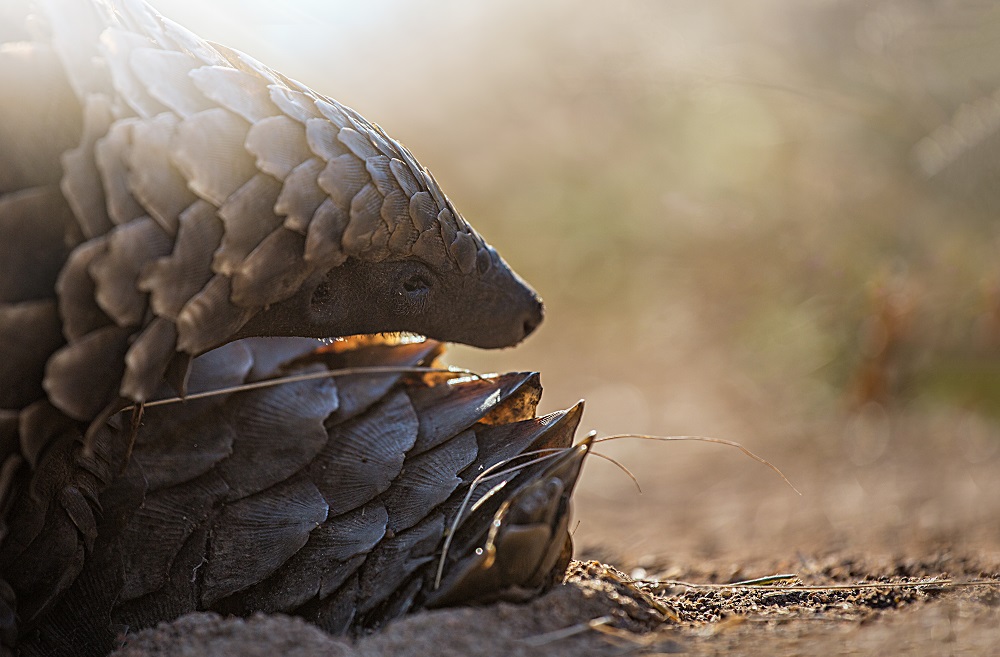News

February 29. - 2024
Pangolins Prioritize Energy Conservation Over Thermoregulation
To better understand how mammals respond physiologically and behaviourally to climate change, scientists are studying animals that already live in hot and dry environments to see how they cope with changes in food supply and the weather. The animal species that are most threatened by climate change are those with specialist diets and are unable to relocate to more suitable habitats when food is scarce.
Will pangolins be more heterothermic?
In a recent study, researchers looked at Teminck’s pangolins (Smutsia temminckii) responses. The pangolins are predominantly nocturnal and feed only on termites and ants (myrmecophagous diet). By being nocturnal, these animals must adjust to low environmental temperatures and heat loss during the nighttime. To maintain body temperature during cold nights requires a high metabolic rate, which in turn requires good access to an abundance of food. The scientist predicted that pangolins would exhibit an increase in heterothermy with less food availability and show an increase in 24-h max body temperature.
Will pangolins be more heterothermic?
In a recent study, researchers looked at Teminck’s pangolins (Smutsia temminckii) responses. The pangolins are predominantly nocturnal and feed only on termites and ants (myrmecophagous diet). By being nocturnal, these animals must adjust to low environmental temperatures and heat loss during the nighttime. To maintain body temperature during cold nights requires a high metabolic rate, which in turn requires good access to an abundance of food. The scientist predicted that pangolins would exhibit an increase in heterothermy with less food availability and show an increase in 24-h max body temperature.
Pangolins implanted with temperature loggers for up to 2 years
Scientist from the University of Witwatersrand, University of Pretoria, and Tswalu Kalahri Reserve in South Africa, implanted seven Temminck’s pangolins (Smutsia Temminckii) with Star-Oddi’s DST milli-T temperature logger. The loggers were placed retroperitoneally through a midline incision. The loggers were set to measure the core body temperature every 5 minutes, for periods of 4 months up to 2 years. The pangolins were tracked during the study with GPS trackers, and cameras were placed by the burrows to catch them leaving and returning. Traps were laid to catch ants and termites, and environmental temperatures were also measured.
Body temperature is kept in a narrow range
Results showed that the pangolins regulated their body temperature in an unimodal distribution over 24-hours, the temperature being between 34 and 36°C in summer, when food was abundant. It was also shown that they change their thermoregulation from homeothermic to more heterothermy during winter with more fluctuations in the body temperature, which showed in the lowest temperature detected was 28.9°C and the highest body temperature was 38.2 °C during these periods.

Figure 2:The seasonal and interannual 24-h body temperature patterns of pangolins for the two study years.
Food availability is an indicator of pangolin welfare
The scientists concluded that there is a strong relationship between food availability and body temperature, meaning that pray abundance could be a useful and strong indicator of pangolin welfare. This is shown in the temperature data collected as the body temperature is kept within a narrow range when times are good, but this is more relaxed when food is scarce. From this it is possible to conclude that pangolins prioritize energy conservation over thermoregulation.
Further results can be found in the paper published in Conservation Physiology and can be accessed here